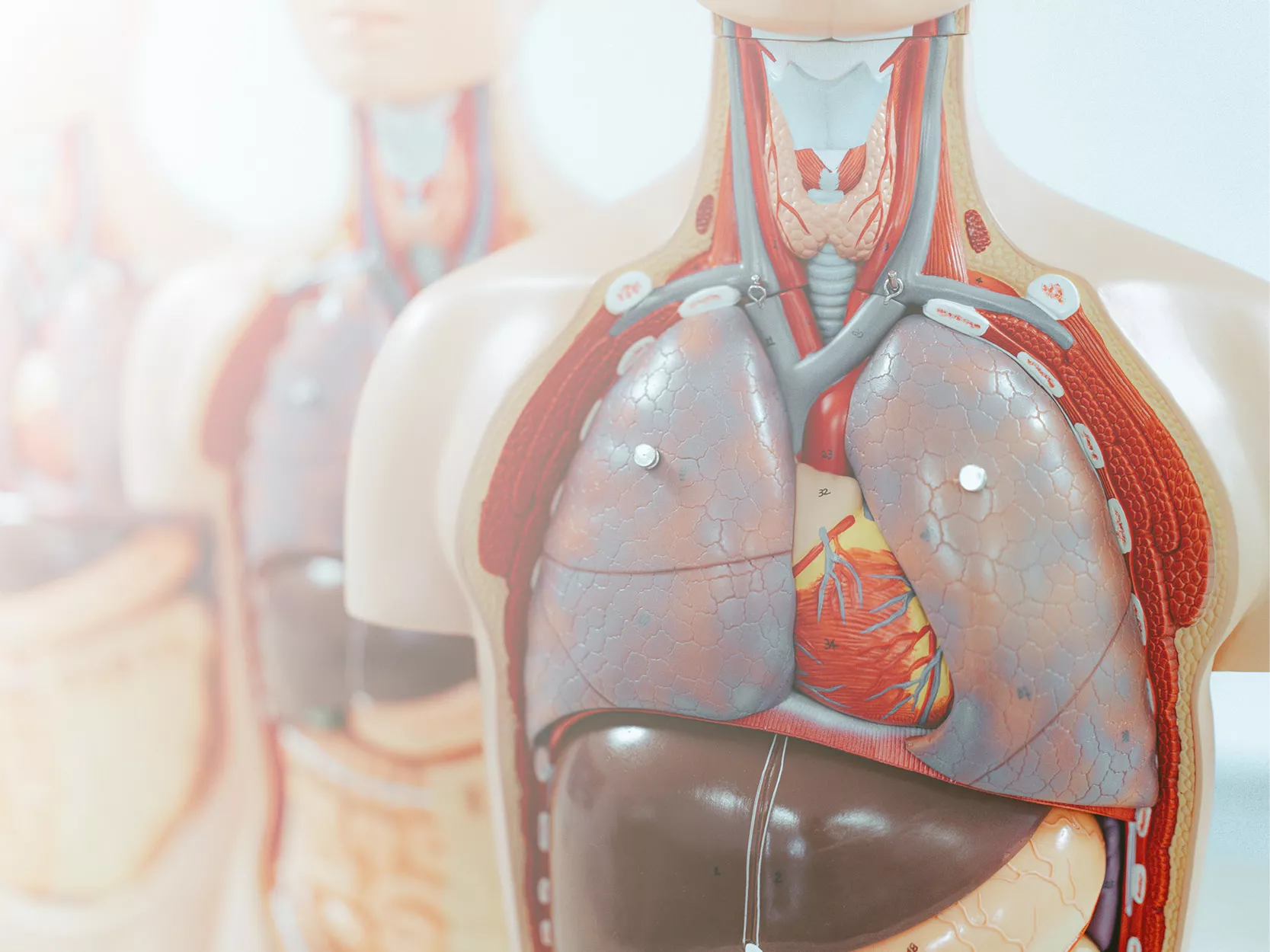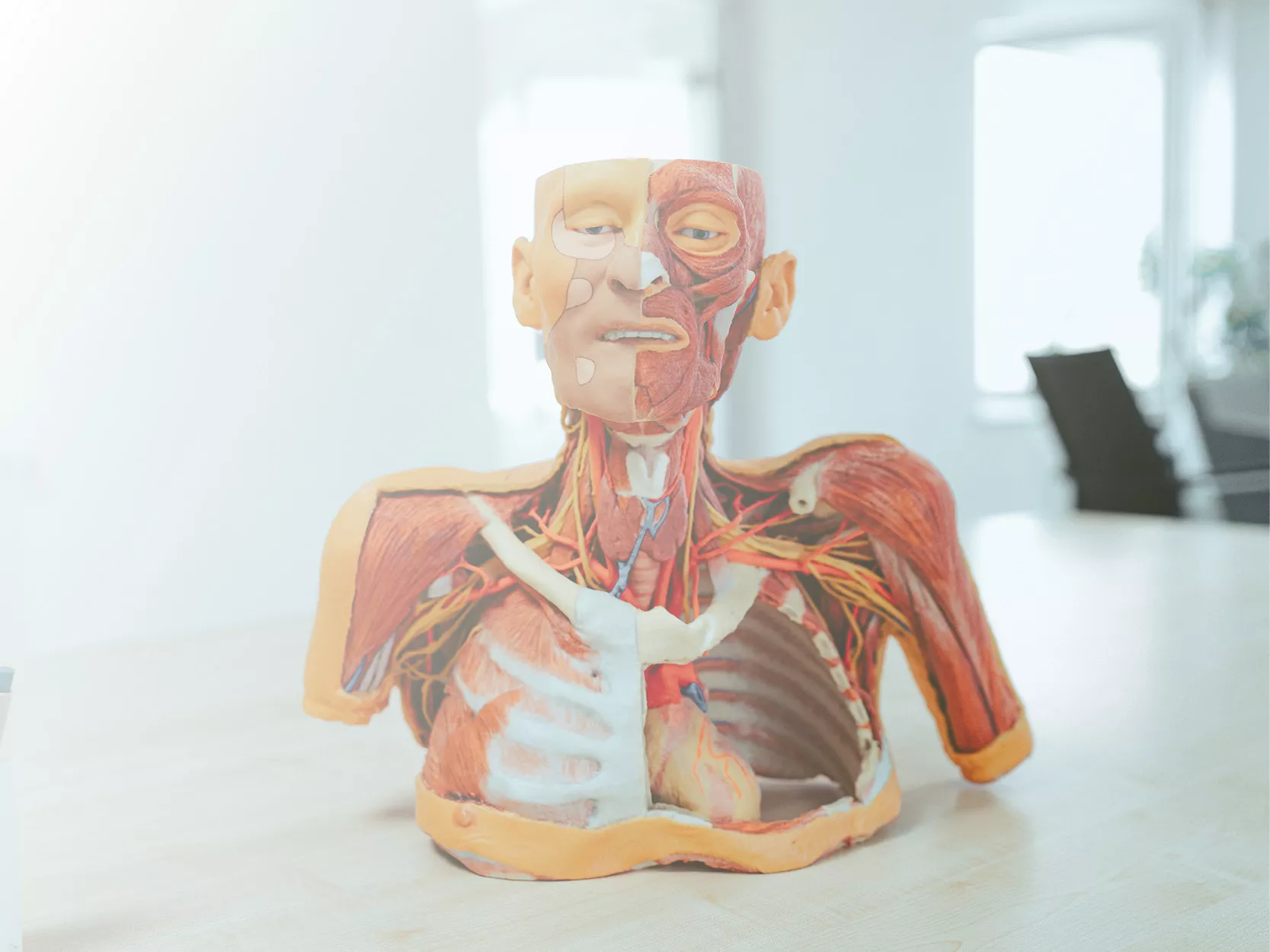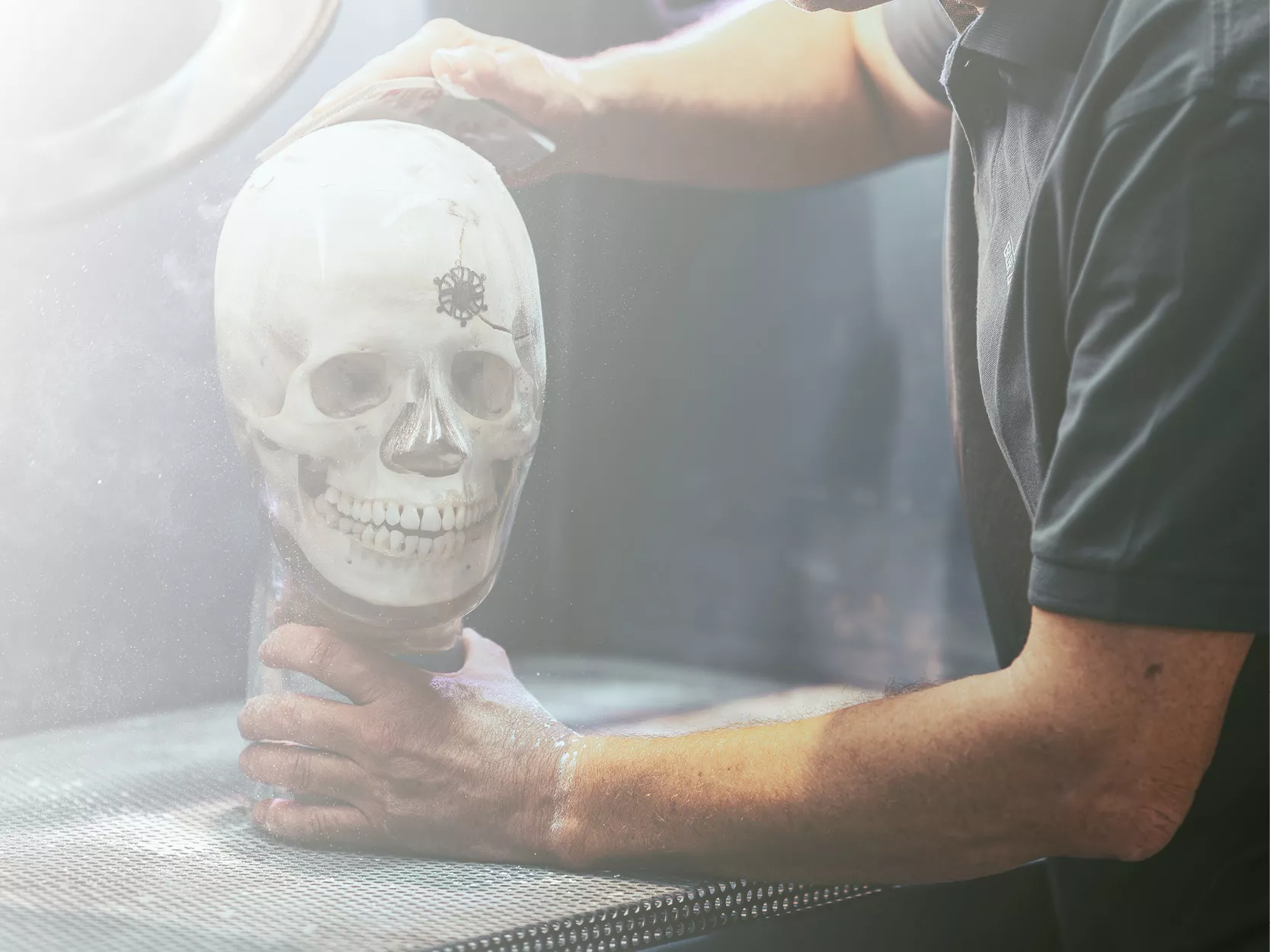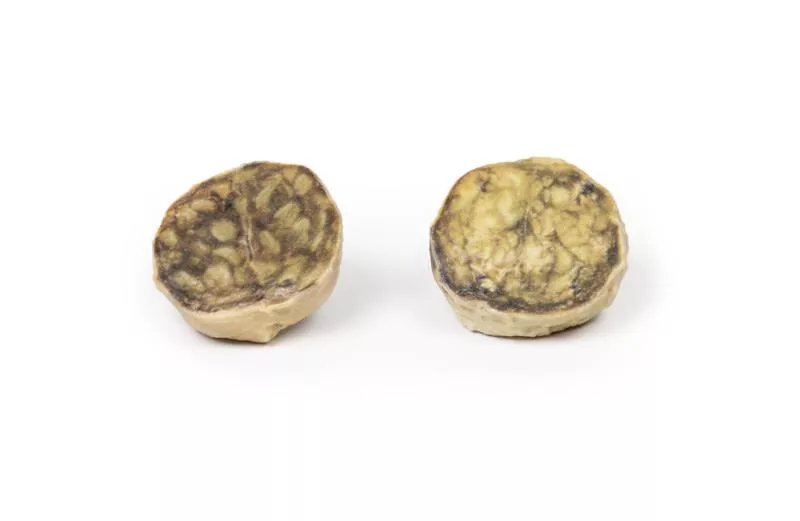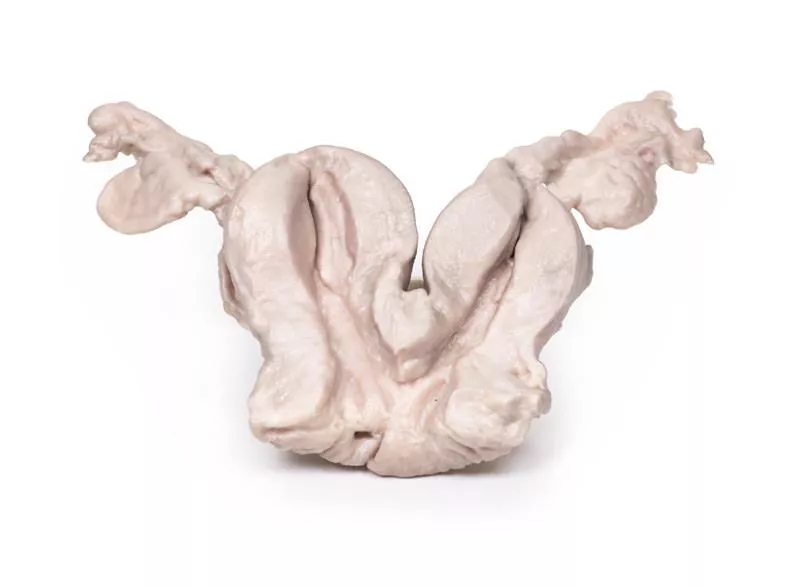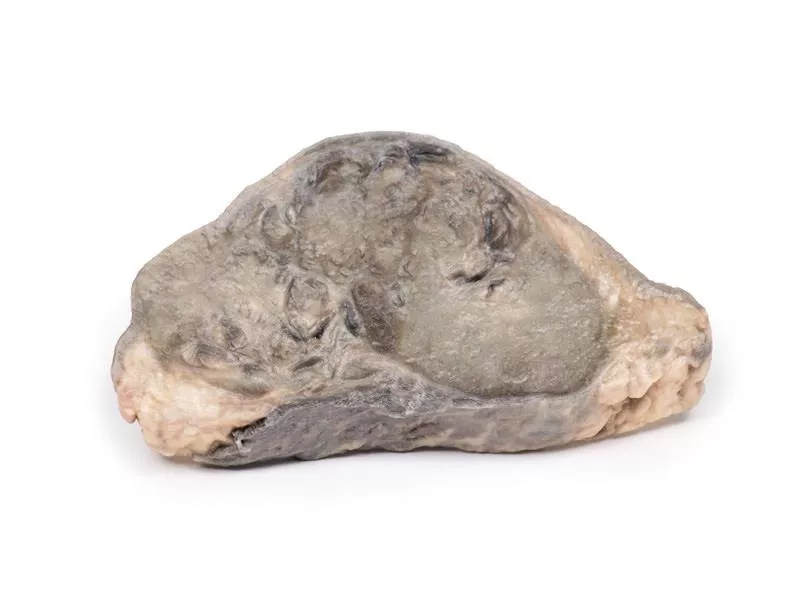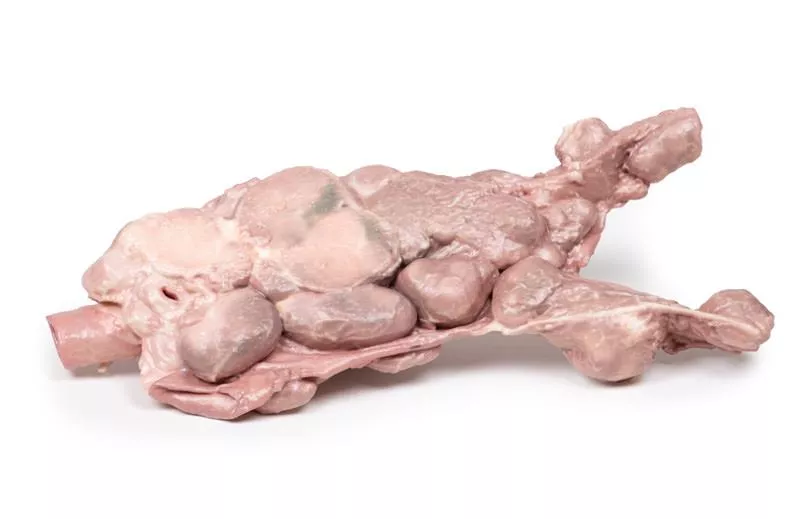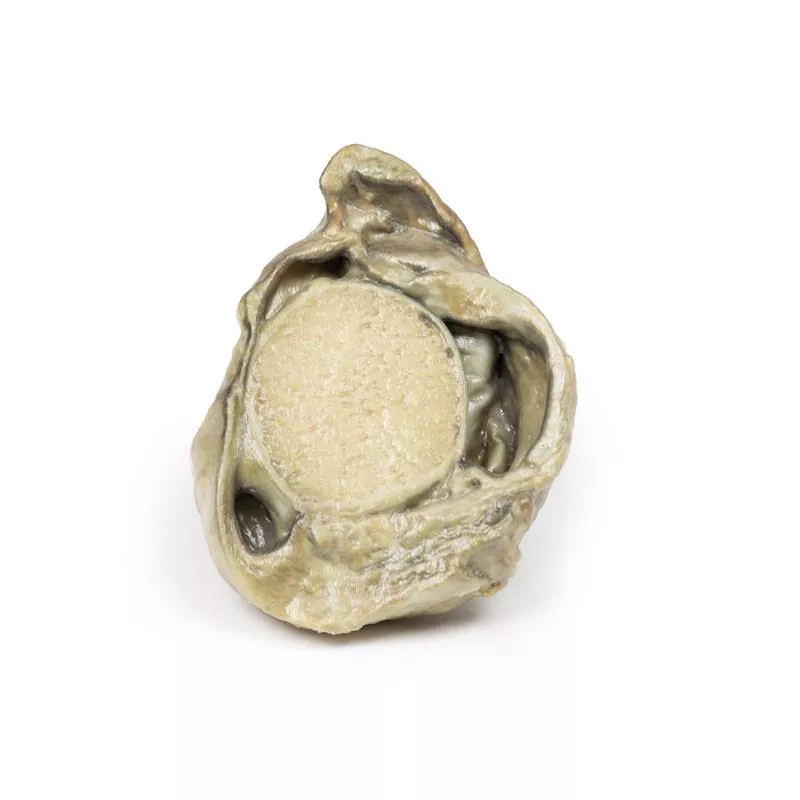Product information "Retrosternal Goiter"
Clinical History
A 60-year-old woman presented with an abnormal swelling in her neck, a persistent cough, and difficulty swallowing. Over the previous years, she had experienced weight gain. She later died of an unrelated cardiovascular condition, and the specimen was collected during the post-mortem examination.
Pathology
The post-mortem specimen includes the larynx, trachea, and a large, multilobular thyroid gland. The thyroid is significantly enlarged, especially the right lobe, which features two prominent lobes extending 7–8 mm superiorly and inferiorly—well beyond normal boundaries from the front view. Posteriorly, the oesophagus has been opened to show the rear wall of the trachea. The right lobe appears even larger from this angle, with the abnormal growth concentrated at its inferior pole. No major pigmentation changes are observed on the surfaces, but prominent veins are visible on the right lobe.
Further Information
Goitre often presents as a visible neck swelling. Depending on its size and location, it may cause pressure symptoms such as difficulty breathing, swallowing issues (dysphagia), hoarseness, and persistent cough. In rare cases, an expanding goitre can paralyse the recurrent laryngeal nerve. Symptoms of tracheal obstruction, including stridor and shortness of breath, may occur. Sudden tenderness and rapid enlargement may result from cystic expansion or bleeding into a thyroid nodule.
Common causes of goitre include autoimmune diseases (such as Hashimoto’s thyroiditis and Grave’s disease), thyroid nodules, and iodine deficiency. Goitre usually results from reduced thyroid hormone synthesis due to biosynthetic defects or iodine deficiency. This leads to increased TSH (thyroid-stimulating hormone), which stimulates thyroid growth in compensation. In Hashimoto’s thyroiditis, elevated TSH and autoimmune-related fibrosis both contribute to gland enlargement. In Grave’s disease, thyroid growth is primarily driven by TSH receptor antibodies.
Reference: Hughes et al. (2012). Goitre: Causes, investigation and management. Aust Family Physician, 41, 572–576.
A 60-year-old woman presented with an abnormal swelling in her neck, a persistent cough, and difficulty swallowing. Over the previous years, she had experienced weight gain. She later died of an unrelated cardiovascular condition, and the specimen was collected during the post-mortem examination.
Pathology
The post-mortem specimen includes the larynx, trachea, and a large, multilobular thyroid gland. The thyroid is significantly enlarged, especially the right lobe, which features two prominent lobes extending 7–8 mm superiorly and inferiorly—well beyond normal boundaries from the front view. Posteriorly, the oesophagus has been opened to show the rear wall of the trachea. The right lobe appears even larger from this angle, with the abnormal growth concentrated at its inferior pole. No major pigmentation changes are observed on the surfaces, but prominent veins are visible on the right lobe.
Further Information
Goitre often presents as a visible neck swelling. Depending on its size and location, it may cause pressure symptoms such as difficulty breathing, swallowing issues (dysphagia), hoarseness, and persistent cough. In rare cases, an expanding goitre can paralyse the recurrent laryngeal nerve. Symptoms of tracheal obstruction, including stridor and shortness of breath, may occur. Sudden tenderness and rapid enlargement may result from cystic expansion or bleeding into a thyroid nodule.
Common causes of goitre include autoimmune diseases (such as Hashimoto’s thyroiditis and Grave’s disease), thyroid nodules, and iodine deficiency. Goitre usually results from reduced thyroid hormone synthesis due to biosynthetic defects or iodine deficiency. This leads to increased TSH (thyroid-stimulating hormone), which stimulates thyroid growth in compensation. In Hashimoto’s thyroiditis, elevated TSH and autoimmune-related fibrosis both contribute to gland enlargement. In Grave’s disease, thyroid growth is primarily driven by TSH receptor antibodies.
Reference: Hughes et al. (2012). Goitre: Causes, investigation and management. Aust Family Physician, 41, 572–576.
Erler-Zimmer
Erler-Zimmer GmbH & Co.KG
Hauptstrasse 27
77886 Lauf
Germany
info@erler-zimmer.de
Achtung! Medizinisches Ausbildungsmaterial, kein Spielzeug. Nicht geeignet für Personen unter 14 Jahren.
Attention! Medical training material, not a toy. Not suitable for persons under 14 years of age.





